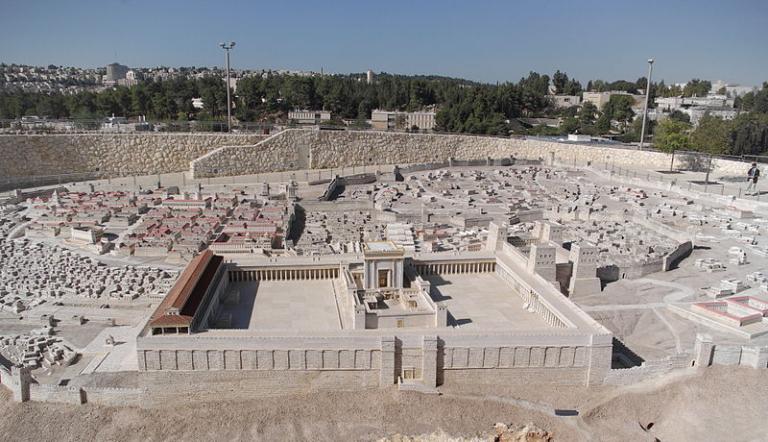
(Wikimedia Commons public domain image)
***
Just three days into 2022 and you’ve already run out of good things to read? That’s not our fault. Have a look at the books that the Interpreter Foundation has published this far:
And here are some articles from a past but still relatively recent number of Interpreter: A Journal of Latter-day Saint Faith and Scholarship:
“The Rise and Fall of Korihor, a Zoramite: A New Look at the Failed Mission of an Agent of Zoram,” by Godfrey J. Ellis
Abstract: The accounts of the Anti-Christ, Korihor, and of Alma’s mission to the Zoramites raise a variety of apparently unanswered questions. These involve Korihor’s origins, the reason for the similarity of his beliefs to those of the Zoramites, and why he switched so quickly from an atheistic attack to an agnostic plea. Another intriguing question is whether it was actually the devil himself who taught him what to say and sent him on a mission to the land of Zarahemla — or was it a surrogate of the devil or a human “devil” such as, perhaps, Zoram? Final questions are how Korihor ended up in Antionum, why the Zoramites would kill a disabled beggar, and why nobody seemed to have mourned his violent death or possibly unrighteous execution. There are several hints from the text that suggest possible answers to these intriguing questions. Some are supported by viewing the text from a parallelistic or chiastic perspective.
“Moses 6–7 and the Book of Giants: Remarkable Witnesses of Enoch’s Ministry,” by Jeffrey M. Bradshaw
Abstract: The Book of Giants (BG), an Enoch text found in 1948 among the Dead Sea Scrolls, includes a priceless trove of stories about the ancient prophet and his contemporaries, including unique elements relevant to the Book of Moses Enoch account. Hugh Nibley was the first to discover in the BG a rare personal name that corresponds to the only named character in the Book of Moses besides Enoch himself, a finding that some non-Latter-day Saint Enoch scholars considered significant. Since Nibley’s passing, the growth of new scholarship on ancient Enoch texts has continued unabated. While Nibley’s pioneering research compared the names and roles of one character in Moses 6–7 and BG, scholars have now been able to examine the names and roles of nearly all of the prominent figures in the two books and analyze their respective accounts in more detail. Not only are the overall storylines of the two independent accounts more similar than could have imagined a few years ago, a series of recent studies have added substance to the claim that the specific resemblances of the Book of Giants to Moses 6–7—resemblances that are rare or absent elsewhere in Jewish tradition—are more numerous and significant than the resemblances of any other single ancient Enoch text—or, for that matter, to all of the most significant extant Enoch texts combined. Of particular note is new evidence in BG that relates to the Book of Moses account of Enoch’s gathering of Zion to divinely prepared cities and the ascent of his people to the presence of God.
[Editor’s Note: Part of our book chapter reprint series, this article is reprinted here as a service to the Latter-day Saint community. Original pagination and page numbers have necessarily changed, otherwise the reprint has the same content as the original.
See Jeffrey M. Bradshaw, “Moses 6–7 and the Book of Giants: Remarkable Witnesses of Enoch’s Ministry,” in Tracing Ancient Threads in the Book of Moses: Inspired Origins, Temple Contexts, and Literary Qualities, ed. Jeffrey M. Bradshaw, David R. Seely, John W. Welch and Scott Gordon (Orem, UT: The Interpreter Foundation; Springville, UT: Book of Mormon Central; Reding, CA: FAIR; Salt Lake City: Eborn Books, 2021), 1041–256. Further information at https://interpreterfoundation.org/books/ancient-threads-in-the-book-of-moses/.]
“Mine House is a House of Zion and not a House of Babylon!” by Loren Blake Spendlove
Abstract: In Doctrine and Covenants 132:8 we read: “Behold, mine house is a house of order, saith the Lord God, and not a house of confusion.” I propose that the words “order” and “confusion” in this passage are literary allusions to the ideals, constructs, and outcomes that embody Zion and Babylon, respectively. In other words, God’s house is a house of Zion and not a house of Babylon.
“Tamid: Zacharias and the Second Temple,” by Lisle G. Brown
Abstract: This essay follows Zacharias’ biography from entering the priesthood till the day the angel Gabriel appeared to him in Herod’s temple. After recounting the procedures to become a priest, Brown focuses on the day when Zacharias prepared to bring one of the two central standing offerings. He points out that likely, a priest would only have a once in a lifetime chance to partake in the core of this ceremony, entering the Holy Room and burning incense on the Inner Altar. Brown paints a very visual picture of this day, immersing us in the ritual of the time, a ritual that became even more significant for Zacharias by seeing an angel in the temple, something that has not happened before nor after in the Second Temple.
[Editor’s Note: Part of our book chapter reprint series, this article is reprinted here as a service to the LDS community. Original pagination and page numbers have necessarily changed, otherwise the reprint has the same content as the original.
See Lisle G. Brown, “Tamid: Zacharias and the Second Temple,” in Temple Insights: Proceedings of the Interpreter Matthew B. Brown Memorial Conference, “The Temple on Mount Zion,” 22 September 2012, ed. William J. Hamblin and David Rolph Seely (Orem, UT: The Interpreter Foundation; Salt Lake City: Eborn Books, 2014), 241–78. Further information at https://interpreterfoundation.org/books/temple-insights/.]
***
Deseret Book and Excel Entertainment finally seem to have their streaming service, Deseret Video, up and running, and it doesn’t displease me that the Interpreter Foundation’s theatrical film Witnesses is among the items they’re featuring:
I would be especially interested in hearing whether or not people outside of North America are able to access Witnesses this way.












